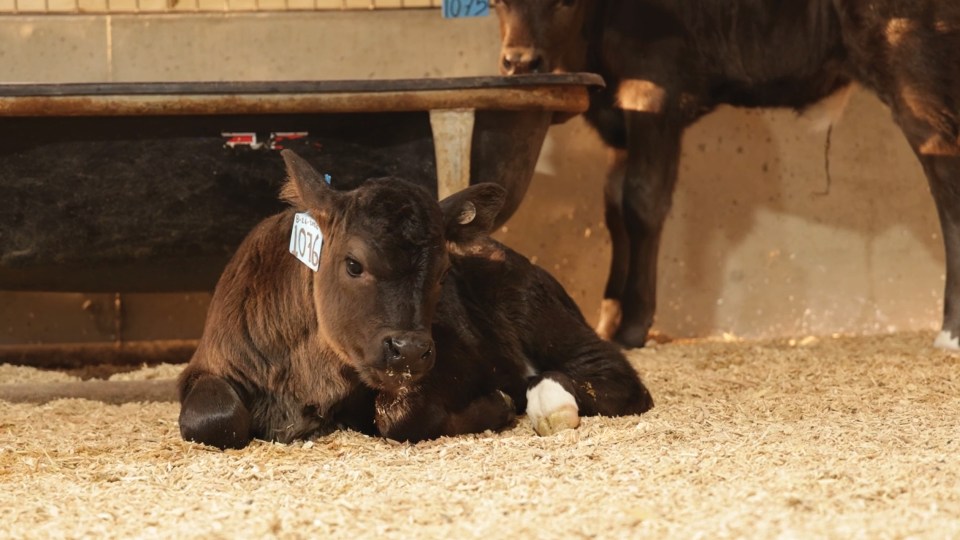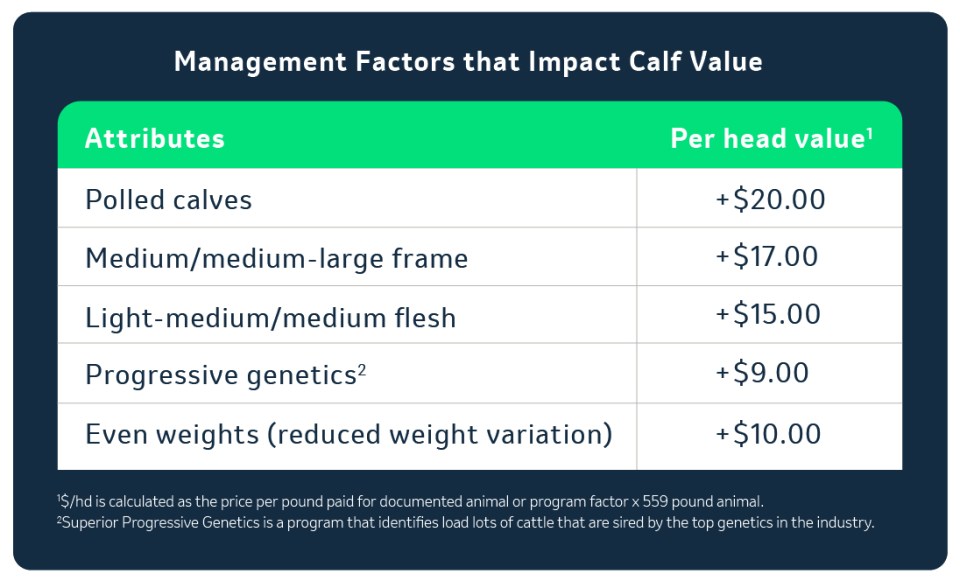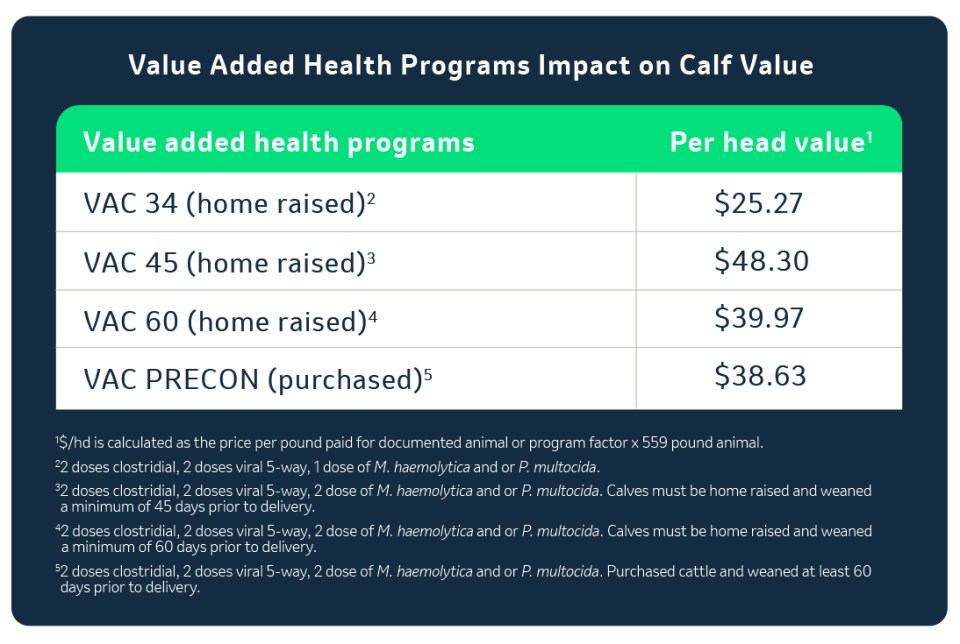Why don’t my calves sell for more?
By Dr. John Hutcheson
As cattle producers sit in auction barns and watch their calves sell, they often wonder why their calves don’t sell for more. What makes buyers pay more for some calves and not others? Adding value to your calf crop can seem like an overwhelming task; there are different management scenarios, programs and health protocols to consider.
Cattle producers need to develop a marketing plan for their calf crop, which starts with evaluating different management decisions, programs and health protocols to understand how they impact revenue. What practices are you not currently doing that can have a positive influence on the price per pound of the calves you’re selling? It is up to cattle producers to determine the balance of costs and rewards of these different marketing decisions.

To make that job a little easier, Merck Animal Health has partnered with Superior Livestock Auction and Kansas State University to evaluate the management decisions, programs and health protocols that drive price per pound paid by buyers. This auction dataset includes information from over 2.5 million head of calves,1 providing a view into what buyers wanted and how they spoke with their checkbook.
Management practices
One of the simplest ways to increase price per pound is to become Beef Quality Assurance (BQA) certified – calves that come from a BQA-certified operation were worth $8 more per head. Producers should reach out to their state cattle organization for help with BQA certification.
There are several other management scenarios that can create more value (Table 1).
- Calves without horns were worth $20 more per head than those with horns.
- Calves that are medium to medium-large framed brought up to $17 more per head than small-framed cattle.
- Light-medium and medium flesh were worth $15 more per head than those with medium-heavy flesh condition.
- Buyers paid more for weight uniformity among a load lot, which led to $10 more per head when load lots are even or fairly even versus uneven load lots.

There are some management decisions that do not change the price received for calves. One such management decision is implanting calves. Over the last four years, in over 4 million head of cattle evaluated, there has not been a difference in price per pound paid between implanted and non-implanted calves.
Calves implanted at 2+ months of age will on average weigh 23 pounds heavier, be leaner and have a slight increase in frame compared to non-implanted calves.2 Using calf prices over the last two years results in an increase in revenue of $40 per calf. That is one management decision that is easy for all cow-calf producers to implement to capture increased revenue.
Marketing programs
When it comes to different marketing programs for your calves, there are numerous options that provide a premium in selling price. These programs do have increased input costs (EID tags, on-site third-party audits, developing quality manuals, etc.) that must be considered when deciding whether to participate.
For example, in the Superior Livestock Auction database, calves sold in the Non-Hormone Treated Cattle (NHTC) program offer a premium of $32 more per head, and Global Animal Partnership (GAP) program calves offer $20 more per head. However, in contrast to these two programs, if a cattle producer used growth-promoting implants, they would see an increase in value of $40 per head (which includes the cost of the implant at $1.50) due to increased weaning weights of 23 pounds2 and no change in price paid for implanted versus non-implanted calves.
Implanting calves is worth considering if your goal is to bring more revenue on sale day.
Preconditioning
The health of cattle after they are sold also influences the price received for calves. Another way producers can positively differentiate their calf crop on sale day is by implementing preconditioning programs, which are one of the most effective strategies to demonstrate advanced calf health and performance.
Preconditioning programs help boost the calf’s immune system and health status with the goal of better preparing calves prior to exposure to pathogens or stressors. Calves that have been dewormed, have received both primary and booster vaccinations and have been weaned at least 45 days prior to sale are expected to have fewer health issues and will receive more per pound (Table 2).
Calves vaccinated with two doses of clostridial, two doses of five-way modified live viruses and at least one dose of a Mannheimia haemolytica and/or Pasteurella multocida vaccine, and weaned at home for 45 days prior to delivery, added $48 more per head1 than those receiving only one dose of each of the three vaccines and not weaned at home.
Preconditioning programs are generally grouped into the following classifications: VAC24, VAC34, VAC45 and VAC PRECON.

The upside of weaning at home for 45 days is that it gives calves time to gain more, which is not accounted for in the premium. No matter when calves are sold, health programs are a significant driver of increased selling price.
PRIMEVAC™ by Merck Animal Health is a value-added preconditioning program that focuses on respiratory and clostridial vaccinations as well as protection against internal parasites. It also includes optional implant protocols. It gives producers a clear guide of the steps needed to give calves the best start. PRIMEVAC also enables producers to demonstrate their preconditioning efforts with a certificate through the program.
For more information about PRIMEVAC, contact your veterinarian.
References
- Superior Livestock Auction Data 2021-2022.
- Selk, G. Implants for Suckling Steer and Heifer Calves and Potential Replacement Heifers. Symposium Proceedings: Impact of Implants on Performance and Carcass Value of Beef Cattle. 1997. Oklahoma Agricultural Experiment Station. P-957.
Find more content for your beef operation.
About the author

John Hutcheson
Ph.D.,
Director, Cattle Technical Services,
Merck Animal Health
